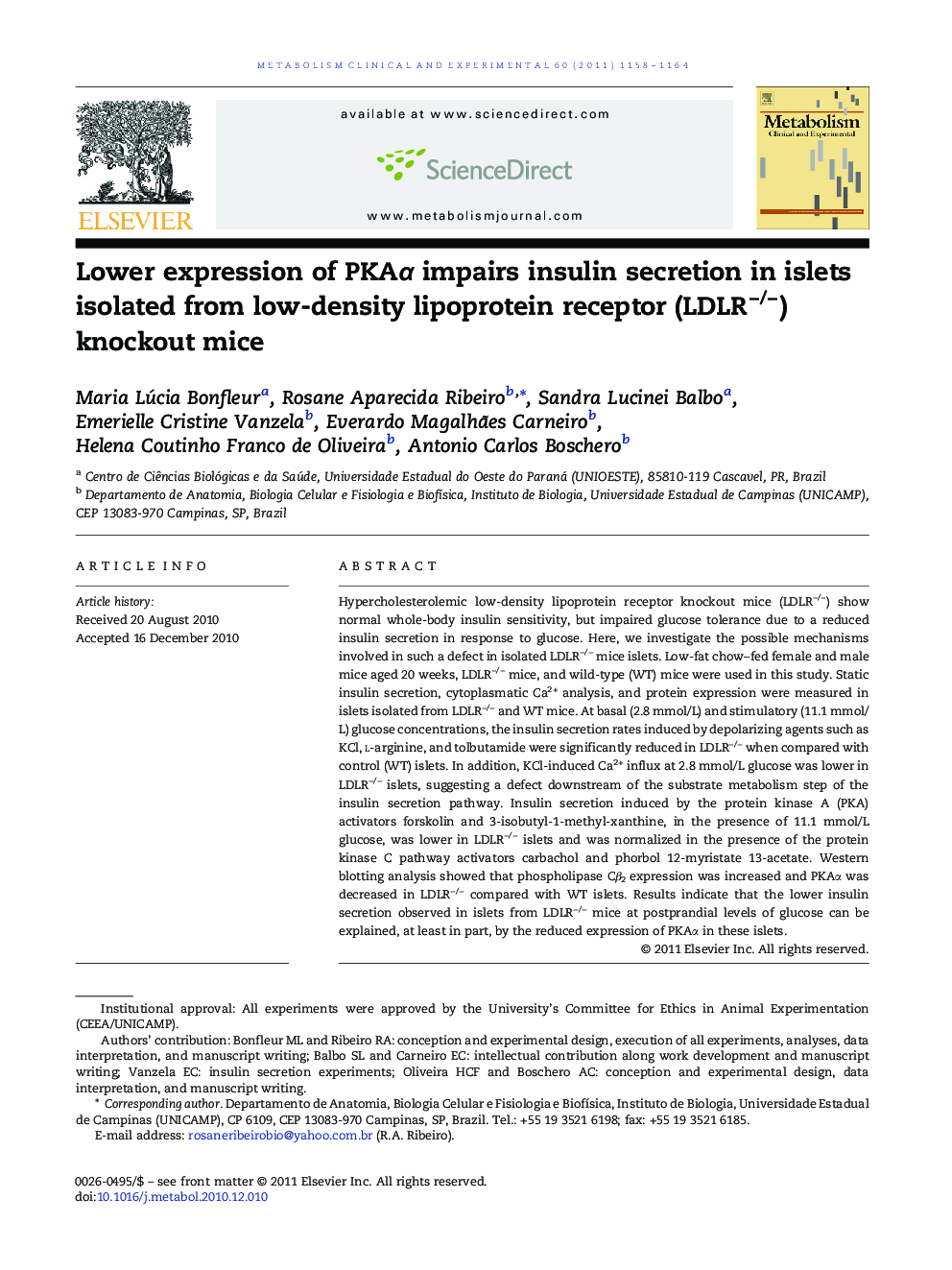| Article ID | Journal | Published Year | Pages | File Type |
|---|---|---|---|---|
| 5903893 | Metabolism | 2011 | 7 Pages |
Abstract
Hypercholesterolemic low-density lipoprotein receptor knockout mice (LDLRâ/â) show normal whole-body insulin sensitivity, but impaired glucose tolerance due to a reduced insulin secretion in response to glucose. Here, we investigate the possible mechanisms involved in such a defect in isolated LDLRâ/â mice islets. Low-fat chow-fed female and male mice aged 20 weeks, LDLRâ/â mice, and wild-type (WT) mice were used in this study. Static insulin secretion, cytoplasmatic Ca2+ analysis, and protein expression were measured in islets isolated from LDLRâ/â and WT mice. At basal (2.8 mmol/L) and stimulatory (11.1 mmol/L) glucose concentrations, the insulin secretion rates induced by depolarizing agents such as KCl, l-arginine, and tolbutamide were significantly reduced in LDLRâ/â when compared with control (WT) islets. In addition, KCl-induced Ca2+ influx at 2.8 mmol/L glucose was lower in LDLRâ/â islets, suggesting a defect downstream of the substrate metabolism step of the insulin secretion pathway. Insulin secretion induced by the protein kinase A (PKA) activators forskolin and 3-isobutyl-1-methyl-xanthine, in the presence of 11.1 mmol/L glucose, was lower in LDLRâ/â islets and was normalized in the presence of the protein kinase C pathway activators carbachol and phorbol 12-myristate 13-acetate. Western blotting analysis showed that phospholipase Cβ2 expression was increased and PKAα was decreased in LDLRâ/â compared with WT islets. Results indicate that the lower insulin secretion observed in islets from LDLRâ/â mice at postprandial levels of glucose can be explained, at least in part, by the reduced expression of PKAα in these islets.
Related Topics
Life Sciences
Biochemistry, Genetics and Molecular Biology
Endocrinology
Authors
Maria Lúcia Bonfleur, Rosane Aparecida Ribeiro, Sandra Lucinei Balbo, Emerielle Cristine Vanzela, Everardo Magalhães Carneiro, Helena Coutinho Franco de Oliveira, Antonio Carlos Boschero,
